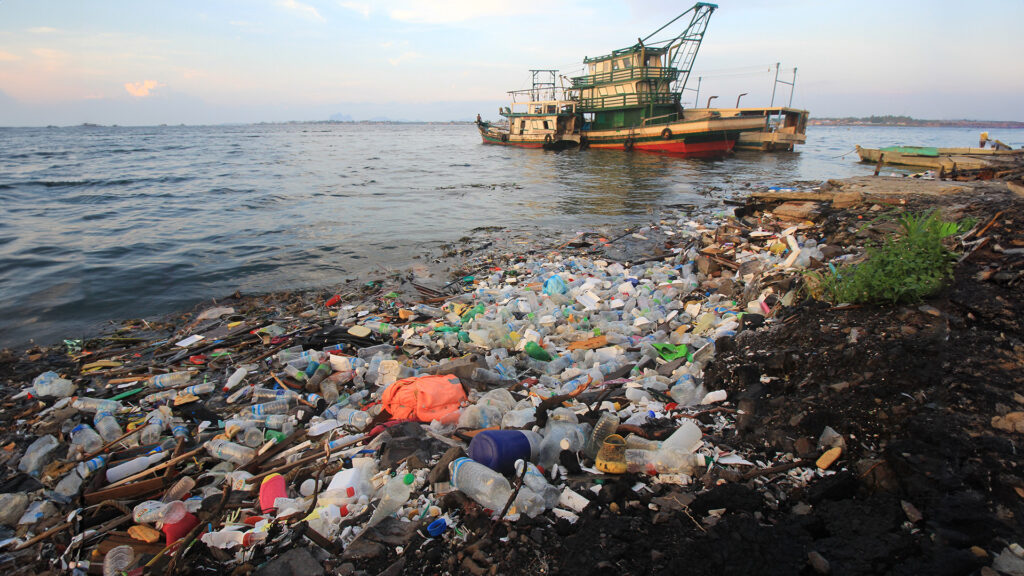In a surprising turn of events, the Australian federal government’s Environment Protection (Sea Dumping) Amendment (Using New Technologies to Fight Climate Change) Bill has successfully passed the Senate with the support of the Coalition. While the bill’s title might not immediately suggest a connection to fossil fuels, it has ignited controversy due to its perceived link to one of the dirtiest fossil fuel projects in the nation’s history.
Speaking passionately in the Senate, the Greens’ Peter Whish-Wilson referred to the legislation as “a naked and shameless attempt to facilitate the dirtiest fossil fuel project in our nation’s history.” While the bill primarily aligns Australia with international protocols on waste disposal in the seas, it also opens the door for gas company Santos to embark on an extensive carbon capture and storage (CCS) initiative in the Timor Sea.
Santos’s ambitious Bayu-Undan CCS project plays a pivotal role in the company’s $5.6 billion gas field project, known as Barossa. The passage of the Sea Dumping Bill represents a significant step toward resolving two major challenges faced by Santos in the Timor Sea.
Firstly, it addresses the approximately $1.6 billion cost associated with decommissioning the Bayu-Undan gas field, which is set to produce its final shipment of LNG by year-end. Secondly, it tackles the substantial amount of carbon dioxide emissions anticipated from Santos’s proposed Barossa gas field, located nearly 300 kilometers north of Darwin.
Barossa’s gas contains some of the highest carbon intensity ever proposed for extraction in Australia, which means that, under the new Safeguard Mechanism reforms, Santos must offset a portion of its emissions. To address both problems, Santos plans to establish a CCS project at Bayu-Undan to sequester CO2 emissions from Barossa, ultimately delaying Bayu-Undan’s cleanup until the 2050s.
However, one challenge remains: the Bayu-Undan field is located in Timorese waters, more than 500 kilometers northwest of Darwin. The CCS project requires a mechanism to transport carbon dioxide across international boundaries, which the Sea Dumping legislation provides for with a permit for the import and export of greenhouse gases. Santos is expected to be among the first companies pursuing such permits.
The passage of this legislation was hailed by the federal government as a critical step in Australia’s transition to achieving net-zero emissions. A spokesperson for Trade Minister Don Farrell, who introduced the bill, stated, “Unlike the Greens political party, we know that being able to achieve net-zero will take a number of steps, including new and emerging technologies.”
Santos, for its part, defended CCS as a proven technology crucial to achieving climate goals. A company spokesperson emphasised the need for a large-scale expansion of CCS and touted Santos’s leadership in delivering low-cost CCS and low-carbon energy on a global scale.
While organisations like the Intergovernmental Panel on Climate Change and the International Energy Agency have emphasised the importance of carbon-reducing technologies like CCS, environmental groups argue against its use as a means to justify new fossil fuel projects.
A recent United Nations Environment Programme report acknowledged the potential role of CCS in addressing emissions from hard-to-transition sectors but cautioned against relying on unproven and costly technologies on a large scale.
The Gorgon field in Western Australia, home to the world’s largest CCS project operated by Chevron, has faced numerous challenges and has only achieved about one-third of its storage target over seven years, according to a company report.
Additionally, the development of a CCS project at Bayu-Undan could enable another new gas field in the Timor Sea, the Evans Shoals gas field, to proceed, provided it implements CCS to reduce emissions.
One significant challenge is Barossa’s high concentration of CO2, around 18%, which presents difficulties for CCS projects aimed at reducing emissions effectively. Transporting the CO2 from Barossa to Bayu-Undan over long distances necessitates compression and substantial energy consumption, which may involve using Barossa’s carbon-heavy gas.
Analysis by John Robert for the Institute for Energy Economics and Financial Analysis suggests that the emissions generated from this process could offset any gains made by CCS efforts, rendering them ineffective.
Santos’s Chief Executive, Kevin Gallagher, has claimed that with the help of the Bayu-Undan CCS project, LNG from Barossa could become “carbon neutral.” However, this assertion does not account for the estimated 11 million tonnes of carbon dioxide-equivalent emissions that will result from burning Barossa’s LNG overseas over the gas field’s approximately 25-year lifespan.
Even if the Bayu-Undan CCS project succeeds, it may only be capable of storing less than 30% of Barossa’s total lifecycle emissions. Currently, construction on an underwater pipeline for the Barossa project is in limbo, as Tiwi Islands traditional owners challenge its approval in Federal Court.

